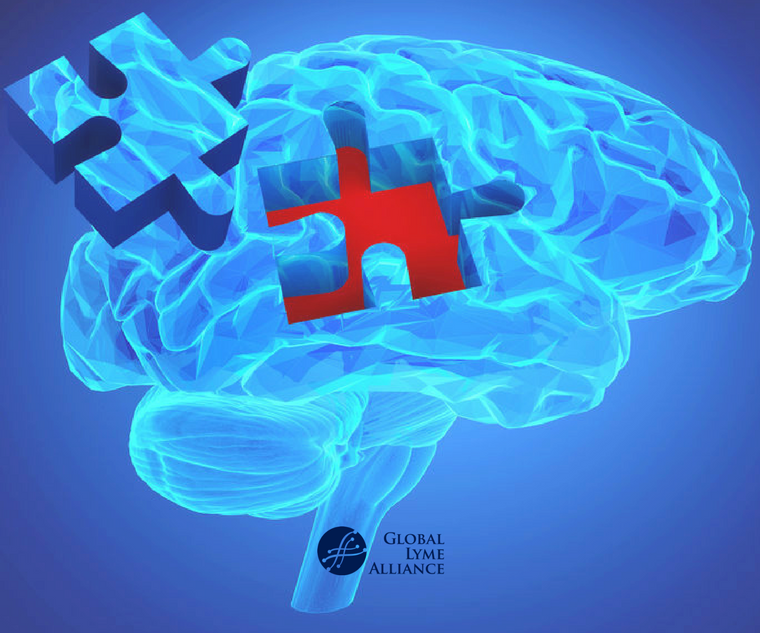
By Philip Perry
Originally published on bigthink.com
For the last 40 years, a minority of researchers have considered the notion that a pathogen might be behind Alzheimer’s disease. In 2011, Judith Miklossy (former GLA Scientific Advisory Board member) and fellow researchers at the International Alzheimer’s Research Center, found evidence of spirochetes—the bacteria that caused Lyme, in the brains of former Alzheimer’s patients.
Today, about 5.5 million Americans live with the neurodegenerative disorder. By 2050, that number could be as high as 16 million. Besides the tremendous blow it delivers to the patient and their family, it also puts a terrible strain on the healthcare system.
Today, dementia sucks down $162 billion per year. Thanks to the “silver tsunami,” or the tremendous baby boomer generation climbing up into old age, dementia could cost the nation as much as $1.1 trillion by midcentury. As a result, Alzheimer’s research has increased dramatically in recent years. So what have we found so far?
We know that sticky globules called amyloid-beta plaques buildup in the brain and as they do, they begin to inhibit proper functioning. The more plaque accumulates, the more faculties a person loses, including chunks of memory, and over time the ability to make plans, drive, cook, bathe, dress one’s self, and eventually, even speak. These globules are aided by tangles of a protein called tau, which block nutrients from passing through neurons’ cell walls, essentially starving them. While tau tangles play an important role, the buildup of amyloid beta plaque is considered the main driver of the disease.
For the last 40 years, a minority of researchers have considered the notion that a pathogen might be behind Alzheimer’s disease. Since the ‘90s, only a few labs across the US have been researching different pathogens which might be associated with the disorder. Note that few microbes can cross the blood-brain barrier—a special protective border which blocks harmful pathogens from entering the brain.
In 2011, Judith Miklossy and fellow researchers at the International Alzheimer’s Research Center, found evidence of spirochetes—a bacteria which can cross the blood-brain barrier, in the brains of former Alzheimer’s patients. This is a type of bacteria responsible for syphilis and Lyme disease, and is also known to cause all kinds of neurological issues if such diseases are left untreated, long-term.
In Miklossy’s work, Borrelia burgdorferi—the species of spirochete that causes Lyme, was identified in 451 out of the 495 Alzheimer’s-riddled brains they examined. Yet, her work at the time was derived by other researchers and until recently, she had difficulty securing funding.
Now however, with many promising new drugs proven ineffective, the field is looking for a new direction to explore, and this may be it. Dermatology professor Herbert Allen of Drexel University, suggested that if Alzheimer’s is indeed an infection, then a biofilm—a bacterial colony that huddles together in order to repel the immune system, could be considered evidence for the presence of an Alzheimer’s-causing bacteria.
These have been found in brains affected by Alzheimer’s. Amyloid plaque buildup therefore could be evidence of an immune response. The person might be infected with a certain kind of spirochete years or even decades earlier, which lies dormant, until the time it deems necessary to become active. This happens with syphilis and sometimes with Lyme.
One interesting finding has been that neurosurgeons performing procedures on those with the neurodegenerative condition, are actually more likely to fall victim to the Alzheimer’s themselves. A 2010 society of neurosurgeons report, found that their members were six times more likely to die from Alzheimer’s than any other condition. Yet currently, the medical establishment considers Alzheimer’s to be non-communicable.
These days, two Harvard researchers have been looking into whether Alzheimer’s might originate with a colony of bacteria in the brain. To find out, they’ve had to launch a larger initiative. Assistant Professor of Neurology Robert Moir, teamed up with Professor of Child Neurology and Mental Retardation Rudolph Tanzi, both of Harvard Medical School and Massachusetts General Hospital.
To read the rest of this blog post, click here. Check back next week for GLA’s point of view on this theory.
Watch this: A video about what may be the culprit behind Alzheimer’s

GLA
Admin at GLA






-2.jpg)